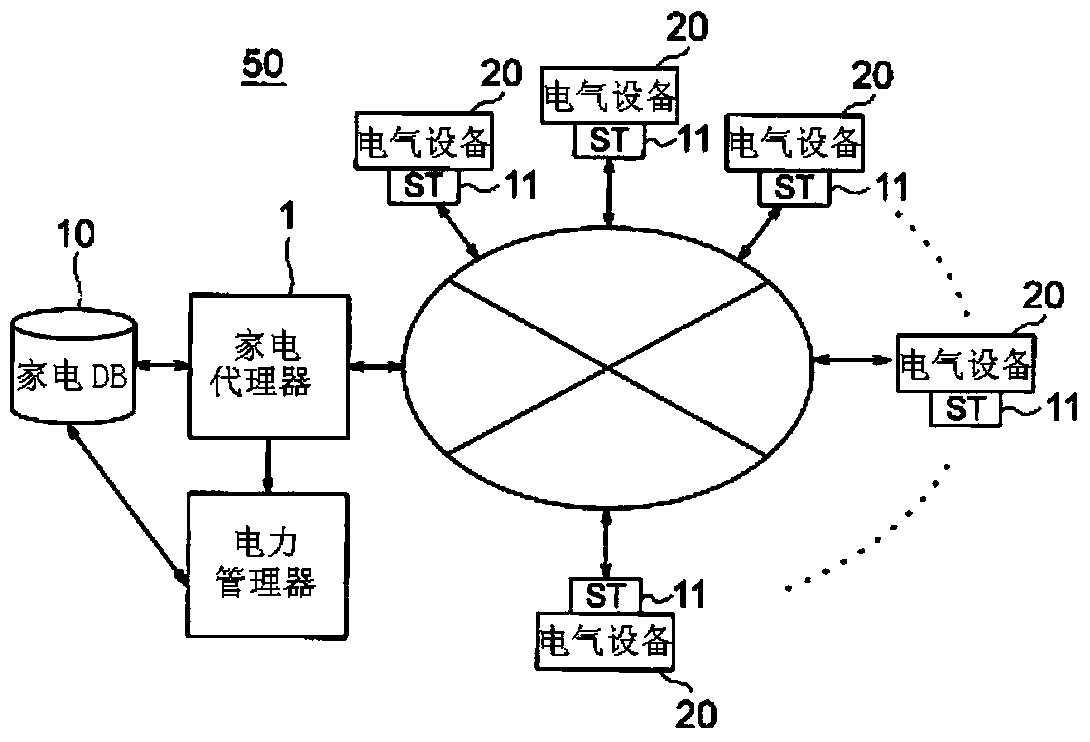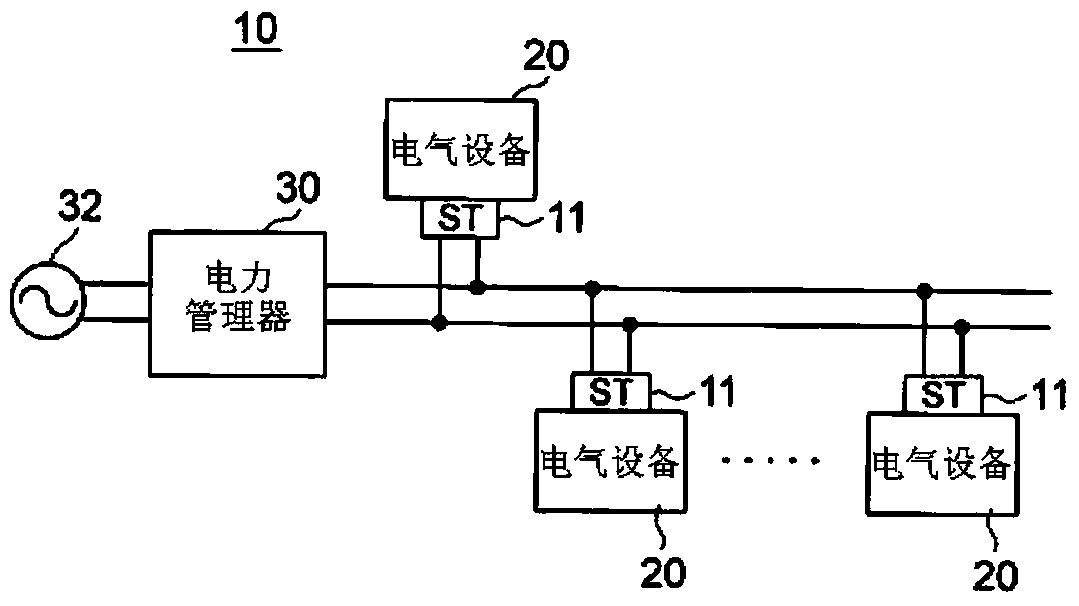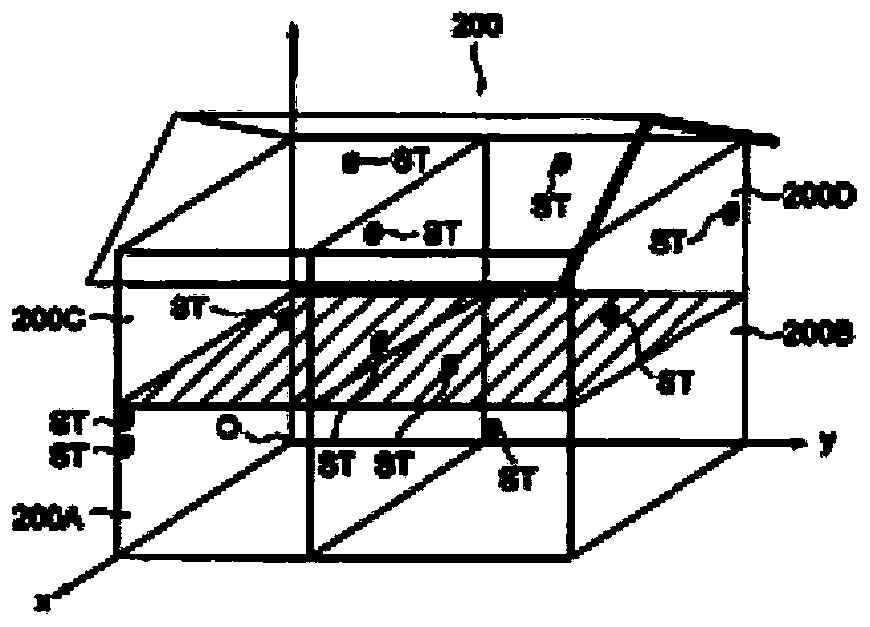On-demand power control system, on-demand power control system program, and computer-readable recording medium on which this program is recorded
A power control system, on-demand technology, applied in the direction of control/regulation system, power network operating system integration, information technology support system, etc., can solve the problems of power reduction, inability to guarantee power reduction rate, no consideration, etc.
- Summary
- Abstract
- Description
- Claims
- Application Information
AI Technical Summary
Problems solved by technology
Method used
Image
Examples
no. 1 approach
[0286] Figure 8 Yes means figure 1 The illustrated functional block diagram of the first embodiment of the functions included in the power manager.
[0287] Figure 8 The reference numeral 1 of the reference numeral 1 denotes a power manager, the reference numeral 10 denotes its memory, and the reference numeral 11 denotes an ST. The power manager is composed of an initial target value update unit 120 and a power adjustment unit 122. Reference numeral (1) indicates the power consumption transmitted from ST. Furthermore, the power manager converts the above-mentioned power consumption into a power usage plan that determines the power usage of each minimum control interval τ as a preprocessing before its operation, and combines the power usage plan, the instantaneous power of the initial target value, and the maximum instantaneous power The power is stored in the storage 10. Reference numeral (2) denotes a power request message sent from ST, and the power request message is sent...
no. 2 approach
[0405] The above-mentioned dynamic priority control unit 1 can finally control the instantaneous power below the maximum instantaneous power, and can perform control that satisfies the upper limit C (Wh) of the accumulated power. However, when the equipment is used, unexpected changes in the load are caused. The increase in instantaneous power sometimes exceeds the maximum instantaneous power. The second embodiment to deal with this situation will be described.
[0406] Figure 18 It is a functional block diagram of the second embodiment.
[0407] The power manager includes an initial target value update unit 120, a power adjustment unit 122, and a continuous monitoring unit 124.
[0408] The initial target value update unit 120 and the power adjustment unit 122 have the same functions as the above-mentioned units, and therefore the description is omitted.
[0409] The continuous monitoring unit 124 continuously monitors the power consumption, and when the overall power consumption e...
Embodiment 1
[0541] (Condition setting of Example 1 and Example 2)
[0542] In the embodiment, in order to obtain data based on real life, experiments were conducted in a smart apartment room. Approximately 20 household appliances used in ordinary life such as refrigerators, washing machines, TVs, air conditioners, and lighting are installed in this smart apartment room of 1DK, and smart connectors are installed in each socket to measure and control their power. In addition, some home appliances have a communication device for acquiring and operating operation and operation function modes, and this communication device is also used.
[0543] In the environment as described above, a home server was set up for data measurement, and all the data that could be measured were recorded and evaluated.
[0544] In this way, experiments were conducted based on the environment. In the simulation experiment, the electric power changes during real life are provided as input, and the EoD protocol is applied ...
PUM
 Login to View More
Login to View More Abstract
Description
Claims
Application Information
 Login to View More
Login to View More - R&D
- Intellectual Property
- Life Sciences
- Materials
- Tech Scout
- Unparalleled Data Quality
- Higher Quality Content
- 60% Fewer Hallucinations
Browse by: Latest US Patents, China's latest patents, Technical Efficacy Thesaurus, Application Domain, Technology Topic, Popular Technical Reports.
© 2025 PatSnap. All rights reserved.Legal|Privacy policy|Modern Slavery Act Transparency Statement|Sitemap|About US| Contact US: help@patsnap.com



